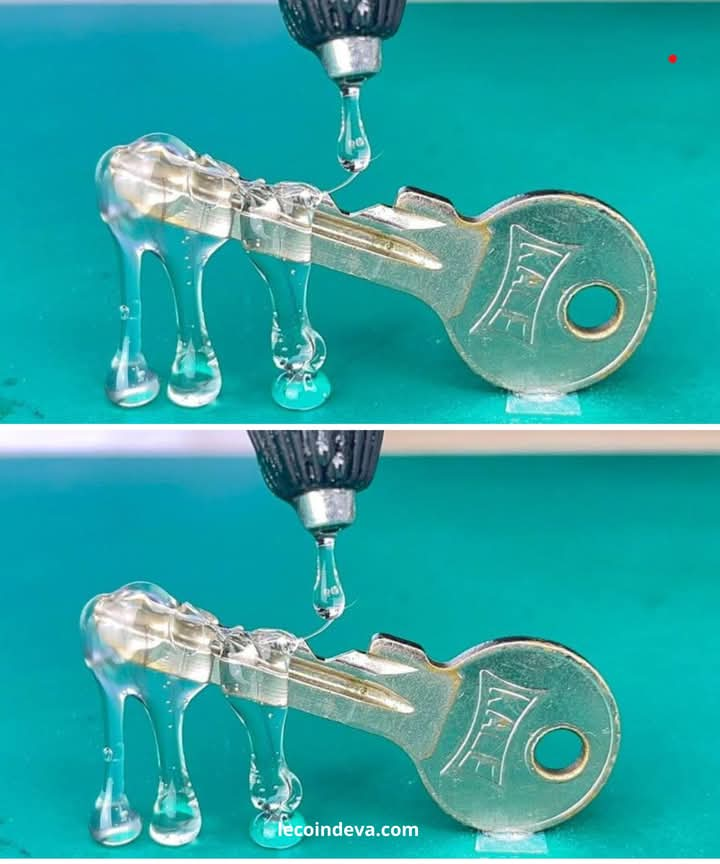ADVERTISEMENT
**Note**: This technique may not work on high-security locks, or if the latch is too firmly set. It’s important not to force the card, as doing so could damage the door frame or the card.
### Trick #2: Using a Bump Key
If you’re dealing with a standard pin-and-tumbler lock, a bump key can be another useful tool. While bump keys are typically used by locksmiths, some people with the right tools can use them in an emergency. It involves using a specially cut key that fits into your lock, allowing you to “bump” the pins into place to open the door.
**What You’ll Need:**
– A bump key (which can often be purchased online, or you can make one yourself if you have the right materials and knowledge)
**Steps:**
1. **Insert the Bump Key**: Place the bump key into the lock, ensuring it’s properly seated in the keyhole.
2. **Bump the Key**: Use a tool like a hammer or a similar object to gently tap the back of the key. The “bumping” action should cause the lock pins to align and the lock to open.
**Note**: This method is not always recommended for beginners, as it requires precision and can be tricky without the right technique. Also, bumping keys can be illegal in some areas, so always check your local regulations before attempting this method.
### Trick #3: Picking the Lock
Lock picking is a skill that involves manipulating the pins inside a lock to align them, allowing it to open without a key. While it’s typically something left to professionals, lock picking kits are available for purchase, and some individuals have successfully learned how to pick simple locks.
**What You’ll Need:**
– A lock-picking kit (which includes tools like a tension wrench and picks)
– Time and patience to learn the technique
**Steps:**
1. **Insert the Tension Wrench**: Insert the tension wrench into the bottom of the keyhole. This wrench will apply light pressure to the lock as you work on picking it.
2. **Use the Pick to Manipulate Pins**: Insert the pick into the lock and feel for the pins. Use the pick to push each pin upward, one by one, while applying gentle pressure with the tension wrench.
3. **Unlock the Door**: If you successfully align all the pins, the lock will turn, and you can open the door.
**Note**: Lock picking requires a lot of practice and patience to master. It’s not a technique you can easily pick up without some prior knowledge or experience, and it should only be done legally on your own locks.
### Trick #4: Using a Spare Key
The simplest method, of course, is to have a spare key. While it might sound obvious, many people overlook the value of having a backup key on hand. If you’ve lost your primary key, check to see if you have a spare stored with a trusted neighbor, friend, or family member.
**What You’ll Need:**
– A spare key (stored safely in advance)
**Steps:**
1. **Retrieve the Spare Key**: If you have a spare key stored in a secure location (such as with a neighbor or in a lockbox), retrieve it and use it to open the door.
2. **Make More Copies**: To avoid future mishaps, consider making additional spare keys and keeping them in multiple safe locations.
**Note**: If you don’t have a spare, now is the perfect time to make one and store it in a secure but accessible location for future emergencies.
### Conclusion: Knowing When to Call a Locksmith
While these tricks can be useful in a pinch, it’s important to know your limits. If the above techniques don’t work or you have a more complex locking system (like smart locks or high-security deadbolts), it might be time to call a professional locksmith. Locksmiths have the experience and tools to safely and quickly open most types of locks without causing damage to your property.
Additionally, if you’ve lost your house keys and are concerned about security, it’s a good idea to have the locks changed or rekeyed as soon as possible to avoid the risk of someone else gaining access to your home.
So next time you lose your house keys, take a deep breath and remember that you may have more options than you think. Whether you use a simple plastic card or employ more advanced techniques, you can often solve the problem without calling in the experts—at least, not right away!
ADVERTISEMENT
